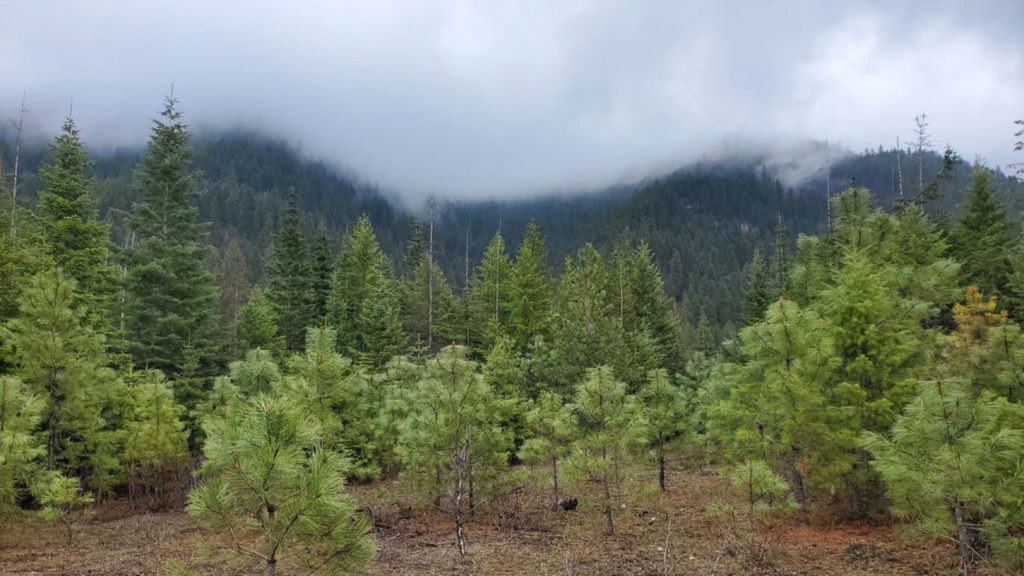Vital Ground and Y2Y are restoring connectivity in the Bull River wildlife corridor, one parcel at a time
An important habitat connection for grizzly bears and other wildlife in northwestern Montana will be conserved as open land after the Vital Ground Foundation and Yellowstone to Yukon Conservation Initiative (Y2Y) completed a land acquisition near the confluence of the Bull River and Clark Fork River.
With development pressures high across the region, the project expands habitat protections in a key wildlife corridor. The newly-purchased property lies adjacent to an 0.3 km2 (80-acre) conservation acquisition completed by the two organizations in 2021, bringing the total size of the protected corridor to 0.5 km2 (129 acres).
The Bull River-Clark Fork confluence area serves as an important linkage zone for wildlife between the Cabinet Mountains to the north and the Bitterroot Mountains to the south. One parcel at a time, connectivity is being restored to this area.
“Helping wildlife safely cross private land, busy roads and other barriers to meet their needs is integral to Y2Y and Vital Ground’s work,” says Pelah Hoyt, Y2Y’s director of landscape connectivity.
“Animals need enough room to sustain a healthy population. These conserved lands serve as a significant milestone in restoring a critical grizzly bear corridor.”

A vital connection for grizzly bears between parks
While providing habitat for a wide range of wildlife and fish species, the Bull River-Clark Fork linkage area serves as a landscape connection of particular importance for grizzly bears. In Montana’s northwestern corner, grizzlies persist in much smaller numbers than they do in the ecosystems anchored by Glacier and Yellowstone national parks.
The project improves connectivity between these populations, protecting a southward pathway from the Cabinet-Yaak Ecosystem, which is home to around 60 grizzlies. Biologists have documented only a handful of movements over the years between that population and neighboring ones but consider genetic exchange between ecosystems crucial for the species’ long-term survival.
To the south of the Bull River-Clark Fork linkage area, the Bitterroot Ecosystem extends deep into the Idaho wilderness. This historic and expansive bear habitat currently lacks a resident grizzly population, seeing only occasional wandering bears from other areas. As a geographic connector between western Montana, northern Idaho and the Greater Yellowstone Ecosystem, the Bitterroot represents a missing piece in restoring a thriving, interconnected grizzly population in the Northern Rockies.
“Grizzly bear linkage across the Clark Fork River is important for the future of bears in the Bitterroot,” says Wayne Kasworm, a grizzly bear biologist for the U.S. Fish and Wildlife Service who has documented several grizzlies near the project area in recent years. “This project is a start and a stepping stone to protecting habitat for bears to make that journey.”
By conserving an open, undeveloped movement area between the Cabinet and Bitterroot ranges, the Bull River-Clark Fork project becomes a strong puzzle piece in Y2Y and Vital Ground’s joint work to build regional connectivity for wildlife. The area also represents a priority in Vital Ground’s One Landscape Initiative, the organization’s strategic effort to conserve the most crucial private lands connecting the Northern Rockies’ wild strongholds.
“Given the level of development pressure Northwest Montana is facing we’re thrilled to be making additional conservation investments in the Bull River linkage area,” says Mitch Doherty, conservation director for Vital Ground. “In just two years we’ve been able to secure over 100 acres in one of the last connectivity areas along this stretch of Highway 200.”
Wide-reaching benefits
Lying in a natural bottleneck area for wildlife moving through the Bull River and Clark Fork valleys, the project will maintain important range for elk, moose and sensitive species like wolverine and lynx. As a nationally-accredited land trust, Vital Ground will consolidate the newly-protected property with its neighboring acreage and carry out a stewardship plan combining habitat restoration and open space conservation.
Beyond aiding wildlife, the project maintains an open, scenic landscape. As real estate pressures continue across Montana, increased subdivision and dense development along the Lower Clark Fork would not only impose further habitat fragmentation and increase the risk of conflicts between bears and people but also threaten public access to popular areas for hunting, fishing, hiking and other activities central to the region’s rural identity.
“We are pleased to collaborate once more with Vital Ground,” says Hoyt. “These conservation outcomes wouldn’t be possible without willing landowners who are motivated to restore habitat, conserve wild places, and secure connections and corridors for generations of people and wildlife to come.”


